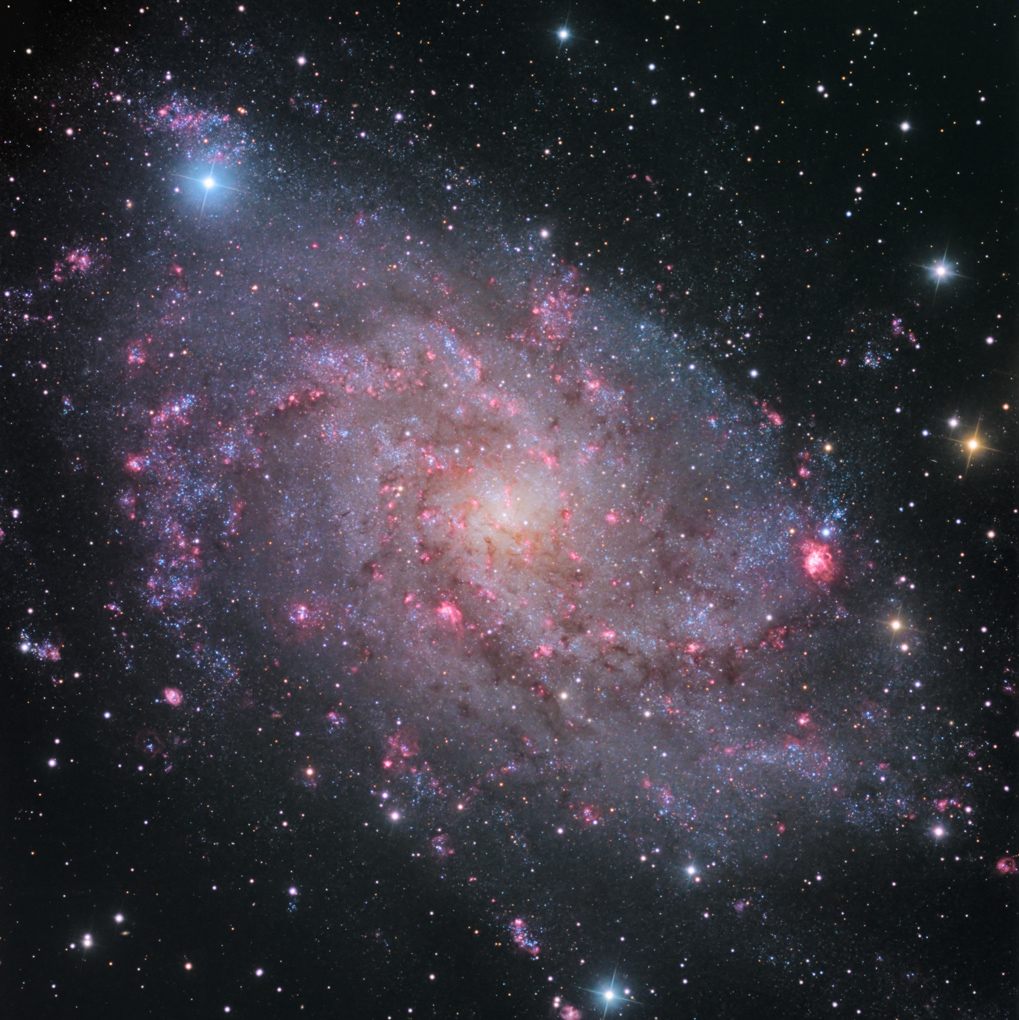
M33 is a spiral galaxy high in the nothern sky in the autumn, into the winter, about 2.7
million light years from us (very close, in cosmic terms); it is among the most distant celestial objects that can be seen with the naked eye (only in very dark skies).
It is thought to be gravitationally-bound to Messier 31, the Andromeda galaxy, the largest galaxy in our local group of galaxies. The pink regions are ionized hydrogen gas, indicating
star-forming regions; perhaps the intense star formation is related to gravitational interaction between M33 and M31. The largest pink region, toward the right center of the image, is
NGC604, a huge (more than 1500 light years across) star-forming region, reminiscent of (but even larger than) the
Tarantula Nebula, in one of our satellite galaxies (the Large Magellanic Cloud). The amount (and sizes) of the star-forming
regions is unusual in my experience of imaging galaxies; I have included a pure-Ha version of the image to show how much Ha emissions (indicating intense star formation) are in that galaxy;
click on the image to toggle between the two.
M33 has a diameter of about 60,000 light years (a good-sized galaxy, but about half that of our Milky Way). It is thought to contain about 40 billion stars, compared to the 400 billion stars in our
Milky Way (and 1,000 billion stars--one trillion--in the Andromeda galaxy).
The galaxy is tilted 54 degrees from us, so that it looks more elliptical than it is.
The entire field of the photo is about the same width as a full moon.
I last imaged this striking galaxy 19 years earlier. To see what a combination of better equipment, better skies, and better skills does, click here
Copyright 2021 Mark de Regt